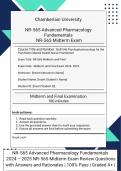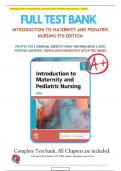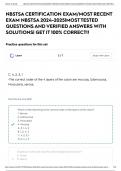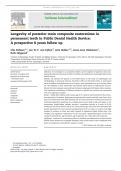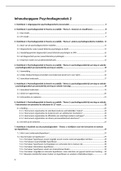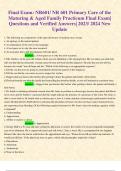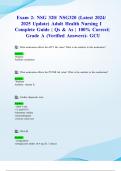Exam (elaborations)
NR-565 Advanced Pharmacology Fundamentals 2024 – 2025 NR-565 Midterm Exam Review Questions with Answers and Rationales | 100% Pass | Graded A+ |
- Institution
- Chamberlain College Of Nursing
NR-565 Advanced Pharmacology Fundamentals 2024 – 2025 NR-565 Midterm Exam Review Questions with Answers and Rationales | 100% Pass | Graded A+ |
[Show more]
